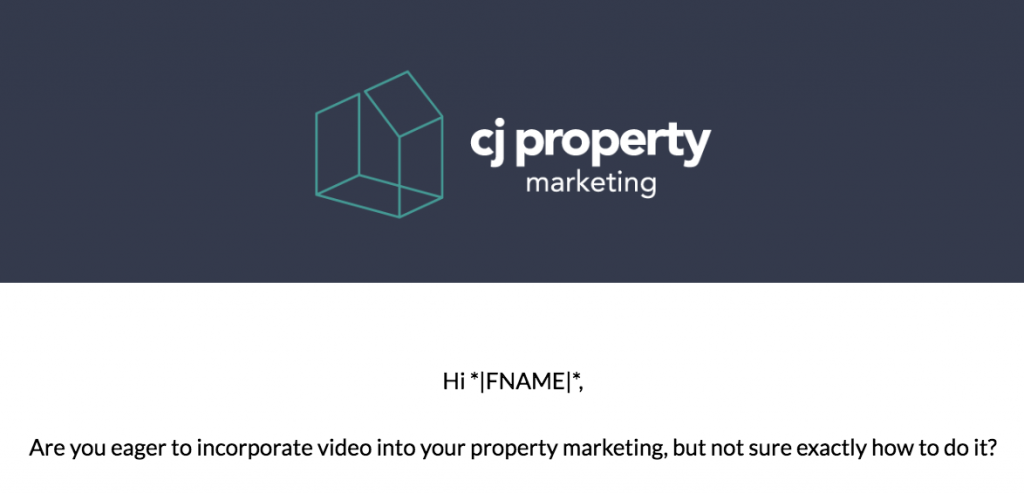Now that we’ve convinced you of the power of email marketing for estate agents, the next step is to figure out what you’re going to write.
As with content marketing or social media, at first it can feel like a bit of a minefield. But once you have a solid strategy in place, it’s a fairly straightforward marketing tool that can reap huge benefits for your business.
Read on to discover our top tips for crafting your email newsletters and how to get them read by the people who matter most.
Define your goals
To come up with an effective email marketing strategy, you need to know what it is that you’re aiming for. Do you want to increase valuations? Drive more traffic to your website? Or maybe you just want to engage with your potential clients?
You don’t need to be too strict around your aims, as these may naturally change over time. But it’s good to keep them in mind when you are first creating your emails so that your message is consistent.
Offer value
One of the main mistakes that companies make when it comes to email marketing is to centre their emails around themselves. Rather than blasting your subscribers with your latest listings or talking about your office achievements, think about what content would provide the best value to your list. You want to share your expert knowledge with your subscribers, as well as strengthening your relationship with them.
Similarly to content marketing, you need to consider what people on your list are wanting from you. A list of vendors (or potential vendors), are obviously looking to sell their home. So what is some insider knowledge that you can share with them on the subject? This might include tips for generating more viewings or easy ways to add value to their property.
That’s not to say you have to write completely different content on top of your blog posts. This is where repurposing comes into play. Think about a different way that you can present your content especially for your subscribers to give them a sense of exclusivity. Why not turn your blog post into a downloadable checklist or even transform it into a video?
Encourage engagement
By asking a question at the end of your email, you are opening up a dialogue between your and your potential client. It doesn’t have to be anything too ‘salesy’ (in fact, you’ll likely get a better response if it’s not).
In order to provoke a response, you should make your question as easy as possible. Ask your list for their thoughts or feedback on your tips, or ask them for help with something.
Once you have begun a conversation over email, it can lead to a conversation over the phone. And once you’ve crossed that hurdle, it’s just one extra step to be invited for a valuation.
It’s all in the subject
A powerful subject line is absolutely vital in getting your email read. After all, what’s the use in crafting valuable content if no one is going to click in to read it?
The best subject lines create a sense of intrigue that will prompt your readers to want to find out more.
Compare, for example, these two subject lines:
- Chalmers and Co Autumn Newsletter
- 5 Easy Ways To Get More Viewings
Which would you be more likely to open? At a time where people are getting upwards of 150 emails a day, you need to ensure that yours will stand out from the crowd.
Get personal
When you set up your sign up box for your emails, it’s good to have a mandatory field that asks for the person’s name. This way, you can use tags when you create your emails so their name is included in the text. Here is how this looks when you create an email in Mailchimp:


For each recipient, the FNAME will be replaced with whatever information has been entered into the first name field. This also works in the email subject, and is a great way to get a higher open rate on your emails.
While we’re on the subject of getting personal, don’t be tempted to write emails in your ‘corporate’ voice. Use words that you would use in conversation and you’ll find that it’s much easier to build a connection with your subscribers.
We hope that now you’ll feel confident to implement your own email marketing strategy, but if you still have questions please don’t hesitate to get in touch. And if you’re not already, make sure to sign up to our newsletter to get our property marketing tips straight to your inbox.





